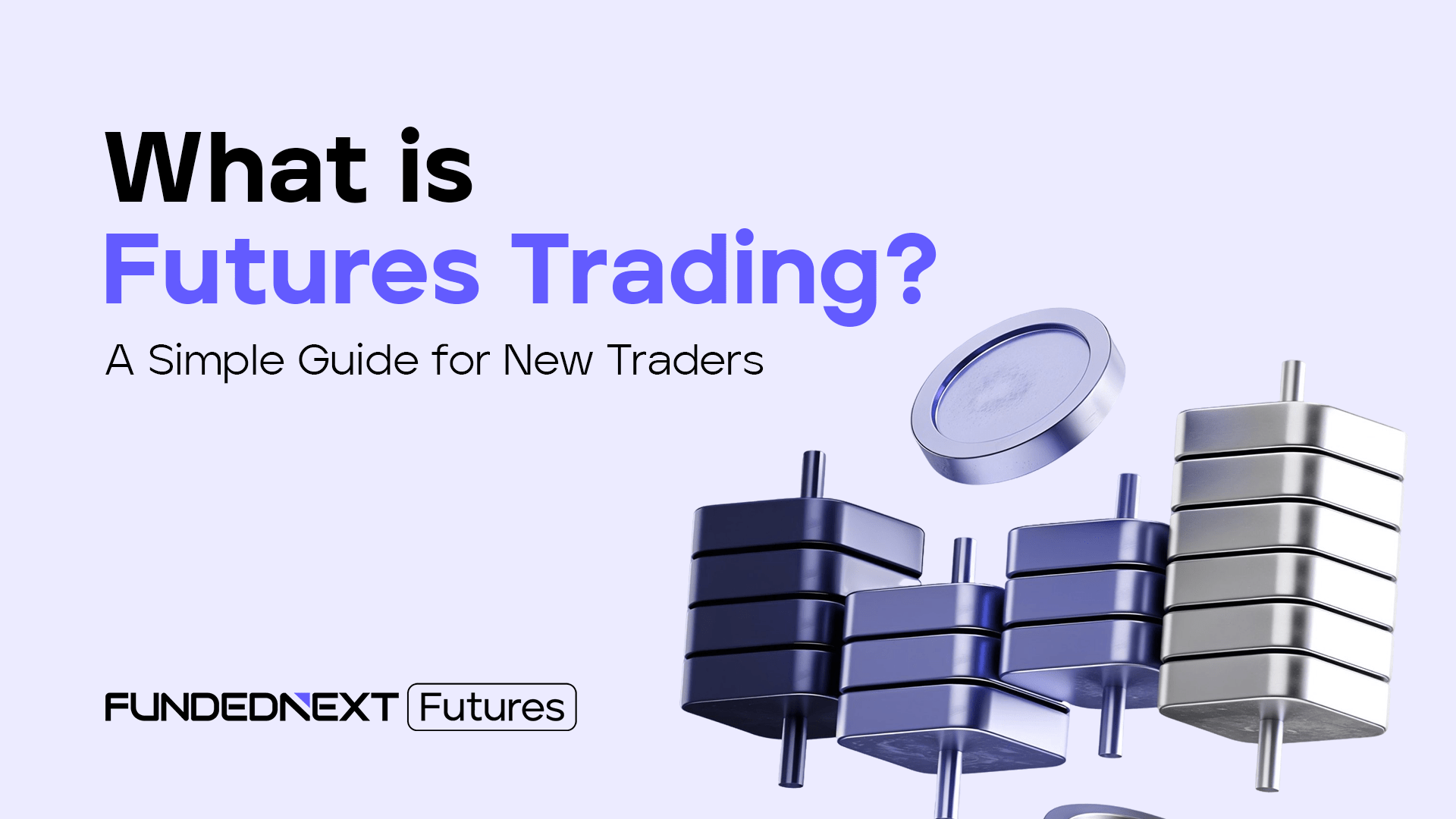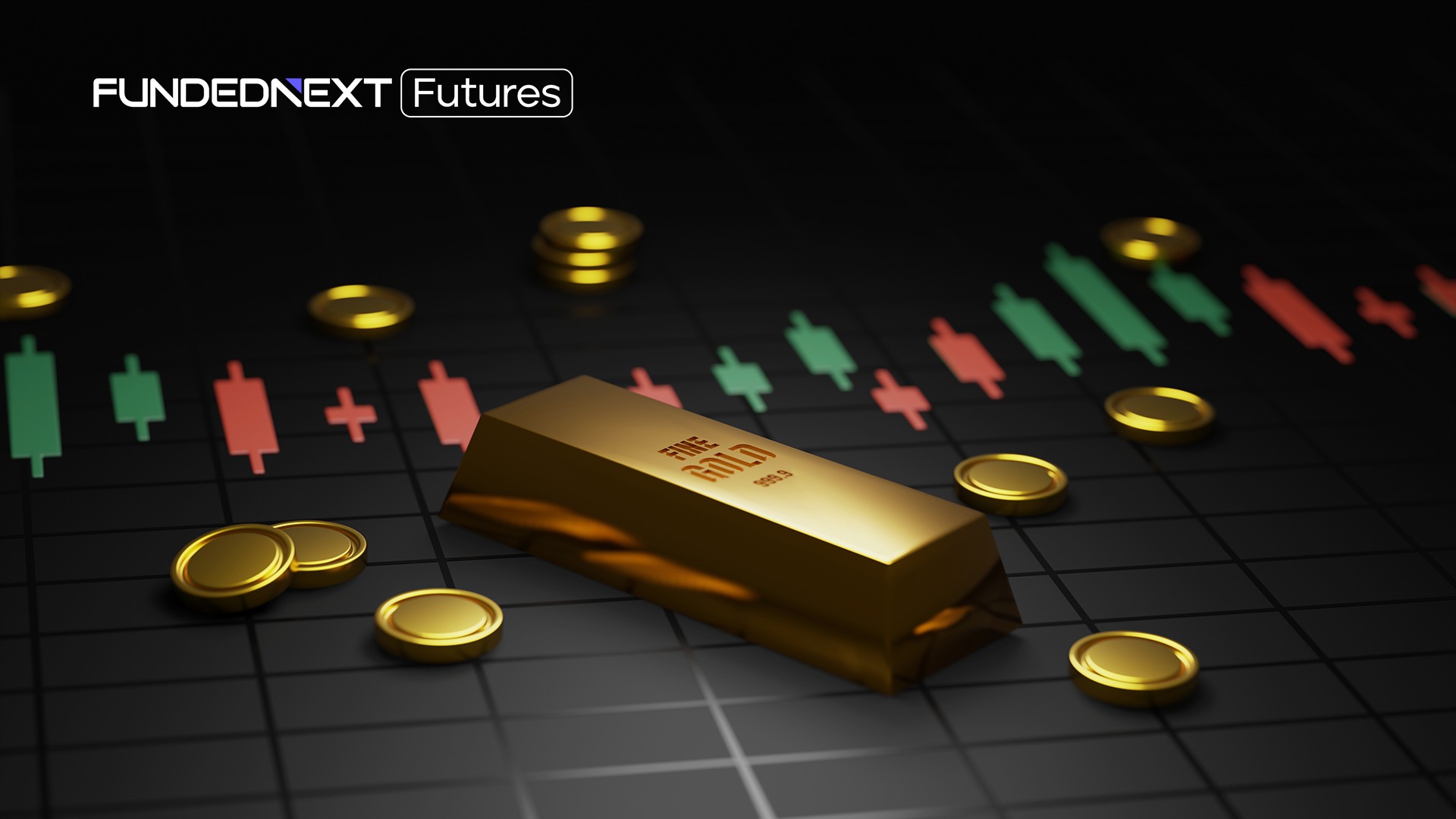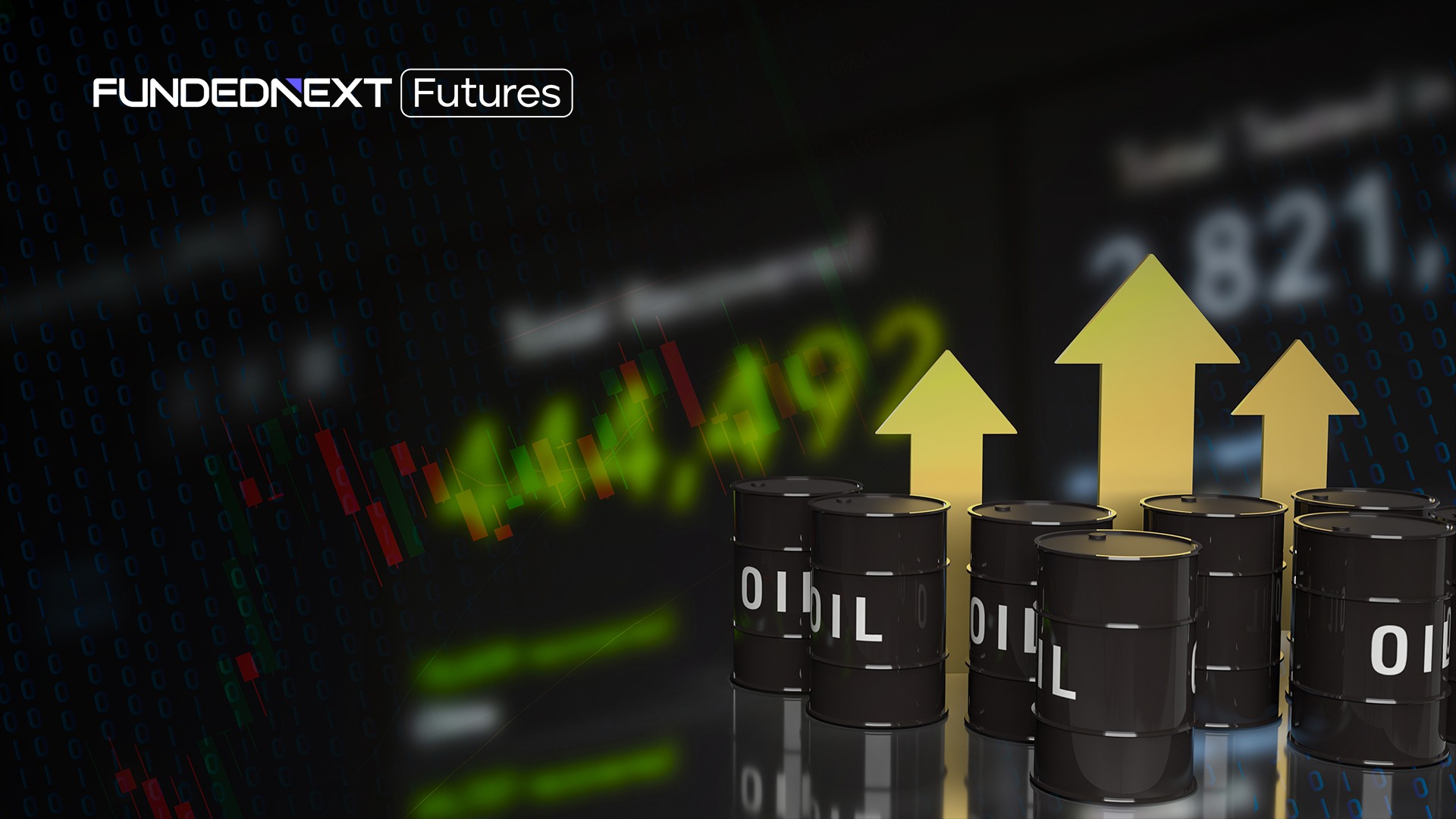
Table of Contents
If you’re new to trading, you’ve probably heard the term “Futures” pop up more than once. It might sound technical or reserved for big-time traders, but it’s not. Futures trading is actually one of the simplest ways to tap into major markets like gold, oil, or stock indices, without needing to own any of them.
You don’t need to be on Wall Street to get started. In fact, many retail traders — especially those trading with prop firms — are using Futures to grow their skills, scale their accounts, and build consistency.
This guide breaks it all down for you. No jargon. No fluff. Just a clear, step-by-step explanation of how Futures trading works and why it might be your next smart move.
Let’s get into it.
What is Futures Trading?
Futures trading is when you buy or sell a contract that represents an asset, like gold, oil, or a stock index, at a fixed price, with an agreement to settle it at a later date. But that is the bookish definition, in retail futures trading– you are not buying the asset itself, rather you are just trading the price of that asset based on where you think the market will go, depending on your analysis.
Think of it like this: you’re analyzing a futures market contract and making the decision of buying/selling it.. If the price moves in your favor, you win. If not, you lose. That’s the core idea — and it’s the same whether you’re trading stock indices such as the Nasdaq Futures contract or a commodity contract such as Gold or Silver.
Why Retail Traders Choose Futures
Futures trading has become increasingly popular among retail traders, especially those looking to expand their opportunities in other markets, and grow bigger in a very much regulated and transparent market. Here’s what makes Futures stand out:
1. Access with Lower Capital
Futures allow traders to control sizable positions with a relatively small margin requirement. This means you don’t need a massive account balance to get exposure to major markets. When trading futures, you don’t need to pay the full value of the contract upfront. Instead, your balance needs to be enough to fulfill the small portion of the contract’s total value.
2. Direct Access to Global Exchanges
Futures trading gives you access to some of the world’s leading exchanges — like CME, CBOT, NYMEX, COMEX, and CBOE. These centralized platforms host contracts for a wide range of assets, from commodities to stock indices, allowing you to participate in globally recognized markets with real-time transparency.
With most trading platforms offering direct access to these exchanges, you can act on global opportunities quickly and efficiently — all from your screen.
3. Cost-Efficient Trading
Futures trading often comes with low transaction costs. With tight spreads and clear fee structures, more of your capital stays in play — which can help when aiming for consistency over time.
4. Standardized and Transparent
Futures contracts follow a clear set of rules: defined contract sizes, tick values, and expiry dates. This standardization creates predictability and ensures transparency, so traders always know what they’re working with.
5. Exchange-Based and Regulated
Futures are traded on centralized, regulated exchanges. This setup ensures price transparency and removes many unknowns from the trading process. Everyone trades on the same terms, with no hidden pricing or execution disparities.

Types of Futures Contracts You’ll See
As a beginner, you’ll mostly deal with contracts in these popular categories:
- Index Futures: Based on stock indices like the Nasdaq or S&P 500. Great for momentum plays.
- Commodity Futures: Includes oil, natural gas, wheat, corn — ideal for trend-followers.
- Metal Futures: Think gold, silver, copper. Often used during economic uncertainty.
- Currency Futures: Trading the future prices of currency like EURO, Japanese Yen, Pound etc.
Different contracts behave differently. Gold might spike on global tension. Nasdaq might drop on weak tech earnings. That’s why learning how each asset reacts to news and trends will sharpen your edge.
Key Parts of a Futures Contract
Before you start your first trade, you should know what a Futures contract is made of. Here are the essentials:
- Underlying Asset: What the contract is based on — like crude oil, the S&P 500 index, or gold.
- Contract Size: The quantity of the asset per contract. (Example: one gold mini contract = 10 ounces.)
- Tick Size: The smallest price movement. This affects your gains and losses per tick.
- Expiration Date: Every Futures contract expires. You can either close the position or roll over to the next contract.
- Margin Requirement: The amount of money you need to keep the trade open. This varies based on the contract size and asset.
You don’t need to memorize all these right away. But knowing where to find this info when you’re placing a trade is key to avoiding costly mistakes.

Understanding Contract Sizes in Futures
Not all Futures contracts are the same. One of the biggest differences is contract size, which means how much of the underlying asset you’re controlling with a single contract.
- Standard Contracts: These are full-sized contracts. For example, a full gold Futures contract might represent 100 ounces of gold.
- E-Mini Contracts: Introduced to make futures trading more accessible, E-mini contracts are a fraction of the standard contract size. A gold mini might represent just 10 ounces, which means less exposure and lower margin requirements.
- Micro E-mini Contracts: Even smaller than E-mini contracts, these are perfect for traders with smaller accounts. A micro gold Futures contract might represent just 1 ounce.
Why this matters: Smaller contracts let you scale in slowly and control your risk better. As a new trader, starting with mini or micro contracts can help you learn without risking too much upfront.
How Futures Trading Works
Let’s say you expect gold prices to rise.
You take a long (buy) position using 1 mini gold contract.
Now, if the price of gold moves up by 100 ticks, and each tick is worth $10, you’ve made $1,000 in profit.
If the price drops by the same amount instead, you’d be down $1,000.
That’s how Futures work — you’re trading price movements, and your profit or loss depends on the number of ticks the market moves and your position size.
Understanding Margin in Futures Trading
One of the unique parts of trading Futures is how margin works. It’s not like a loan — it’s more like a security deposit.
There are two main types:
1. Initial Margin
This is the amount you need to open a position. Think of it as your entry ticket. It’s usually a small fraction of the full contract value.
2. Maintenance Margin
This is the minimum amount you must keep in your account to hold the position. If your balance drops below this level due to market moves, you’ll get a margin call — meaning you have to add more funds or close the trade.
Tips: Always monitor your margin levels. It’s one of the easiest ways to avoid being forced out of a position unexpectedly.
Common Risks (And How to Handle Them)
Futures trading can open exciting opportunities, especially when approached with the right mindset and preparation. Here are a few things to be aware of as you get started:
Market Movement
Prices can move quickly, which creates great opportunities — but it’s also why having a plan matters. Simple tools like stop-losses help you stay in control, even during fast moves.
Margin Awareness
Futures trading works with margin, meaning you don’t need the full contract value to open a position. It’s helpful to keep an eye on your margin level so you’re always ready to adjust when needed.
Contract Expiry
Every Futures contract has a set expiration date. Just make sure to check that date so you can manage your trades ahead of time — whether you want to close it or roll into the next contract.
Position Sizing
It’s easy to get excited and jump into too many trades at once. But in Futures, less is often more. Focus on clean setups and build consistency one step at a time.
Simple Strategies to Start With
You don’t need complex indicators or a 10-screen setup to get started. In the Futures space, many traders use simple, beginner-friendly strategies to navigate the markets — here are two commonly used ones:
1. Trend Following
How it works: Enter trades in the direction of the overall market trend — either upward (bullish) or downward (bearish). The goal is to ride the momentum as long as the trend stays intact.
Tools used: Moving averages, structure breaks, trendlines, and higher-high/lower-low patterns.
Why it’s common: Futures markets often experience strong directional moves. Following the trend helps traders align with the broader momentum, reducing the chances of fighting against the market.
2. Range Breakout Trading
How it works: Enter trades when price breaks above resistance or below support, anticipating a strong move in that direction.
Tools used: Price levels, volume confirmation, volatility bands.
Why it’s common: Futures markets react sharply to news and technical levels, offering high-momentum breakout opportunities.
Final Thoughts
Futures trading is easier than it sounds. You’re just making trades based on where you think prices are going — up or down — using contracts on trusted exchanges.
You don’t need to know complex strategies or follow big financial news. Just focus on learning good setups, managing your risk, and staying consistent.
This isn’t about overnight riches. It’s about discipline, structure, and long-term skill-building.
Start small. Learn fast. And trade smart.


